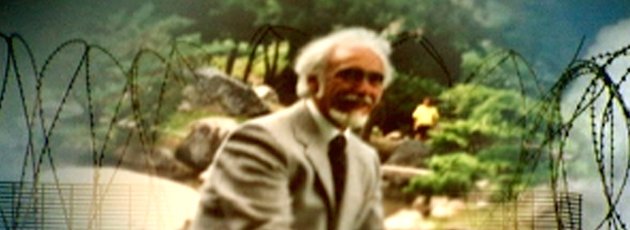- Home
- News & Blogs
- About Us
- What We Do
- Our Communities
- Info Centre
- Press
- Contact
- Archive 2019
- 2015 Elections: 11 new BME MP’s make history
- 70th Anniversary of the Partition of India
- Black Church Manifesto Questionnaire
- Brett Bailey: Exhibit B
- Briefing Paper: Ethnic Minorities in Politics and Public Life
- Civil Rights Leader Ratna Lachman dies
- ELLE Magazine: Young, Gifted, and Black
- External Jobs
- FeaturedVideo
- FeaturedVideo
- FeaturedVideo
- Gary Younge Book Sale
- George Osborne's budget increases racial disadvantage
- Goldsmiths Students' Union External Trustee
- International Commissioners condemn the appalling murder of Tyre Nichols
- Iqbal Wahhab OBE empowers Togo prisoners
- Job Vacancy: Head of Campaigns and Communications
- Media and Public Relations Officer for Jean Lambert MEP (full-time)
- Number 10 statement - race disparity unit
- Pathway to Success 2022
- Please donate £10 or more
- Rashan Charles had no Illegal Drugs
- Serena Williams: Black women should demand equal pay
- Thank you for your donation
- The Colour of Power 2021
- The Power of Poetry
- The UK election voter registration countdown begins now
- Volunteering roles at Community Alliance Lewisham (CAL)
Alois Dvorzac: Detained to death
The inhumanity of our immigration system
Alois Dvorzac was 84-years old when he died in Harmondsworth Immigration Removal Centre (IRC) last month. He was a Canadian citizen of Slovenian origin suffering from Alzheimer’s disease and trying to make his way back home to spend the last days of his life with his estranged daughter. However, his journey was halted when he was denied entry to the UK at Gatwick Airport and transferred to Harmondsworth. He died in handcuffs two weeks later.
It is puzzling that Dvorzac, a nationalised Canadian citizen, was denied entry to the UK, as Canadian citizens don’t require a special visa when travelling to the UK as tourists. It is possible that Dvorzac didn’t have the right paperwork to support his citizenship or as he suffered from Alzheimer’s disease, he may have suffered a medical episode during his interview with the Immigration Officer. No one knows for sure what happened at that moment, but his journey to Slovenia was halted and instead, he was sent to Harmondsworth IRC.
Once at the centre, Dvorzac was examined by a doctor, who certified that he wasn’t fit to be detained because of his condition. She also said that he couldn’t even fly back to Canada because he was so frail, and he needed to be hospitalised instead. The doctor said:
This person was extremely vulnerable, he was frail, he should not have been there in the first place, let alone to be detained for such a long while. He was the sort of person you see and immediately identify with as a sort of grandfather figure."
Yet he was held at the detention centre for nearly three weeks before he died in a hospital as a detainee. On the day of his death, Dvorzac was in handcuffs for over five hours, which were only removed when the hospital staff were attempting to resuscitate him.
This tragic death of Alois Dvorzac, an 84 year old Alzeimer’s patient, declared unfit to fly, but who was kept in conditions where he was handcuffed and detained for nearly three weeks, starkly exposes the inhumanity of our immigration processes.
In the UK, there are 12 Immigration Removal Centres including Harmondsworth where Dvorzac was detained. Harmondsworth, located near Heathrow Airport holds 600 detainees and is the largest centre in Europe. It is run by GEO Group, a private firm that offers security and detention services. It holds only men and the security in several of the wings is comparable to a Category B (high security).
The centres are designed to hold people who are waiting for decisions on asylum applications or were denied entry to the country and are awaiting deportation. They are meant to hold immigrants, not criminals, but at times the lines appear to blur and detainees are kept under inhumane conditions, face intimidation and excessive use of force.
Even children are detained inside these centres and have to face the same conditions as the adults. Moreover, there is no time limit on the length of time someone can be detained in a detention centres, therefore some detainees may wait months, even years for a decision to be made.
The issue of dire conditions individuals experience in these centres has come up repeatedly, yet the government hasn’t addressed it with efficacy. There have been over 20 deaths in UK detention centres, of which nearly 50% have been at Harmondsworth.
Furthermore, since 2007 nearly 11,000 people were on suicide watch in detention centres and over 1300 made suicide attempts. Aside from the tragic human cost, the financial costs are also significant. One year of detention in Colnbrook, where many people are held for long periods of time, costs over £70,000.
The UK has some of the largest immigration detention facilities in Europe holding between 2000 and 3000 migrants at any given time. The government says that as these numbers keep increasing, dealing with the problem becomes more challenging.
Yet the issue here is that migrants are detained in these ‘prisons’, when they should be held at facilities that are meant for waiting for an answer rather than what could be perceived as punishing them for attempting to enter the country through legal means.
The lack of response by the government to effectively challenge this dehumanising system, appears to confirm that immigrants are used in the public discourse as political fodder, as the enemy. What we must do is examine and challenge our government’s treatment of immigrants and detainees and ensure that rectifying the inhumane conditions and ‘hostile environment’ which they are subject to becomes a political priority, and immigration is not used as political pawn.
Angelica Encinales
